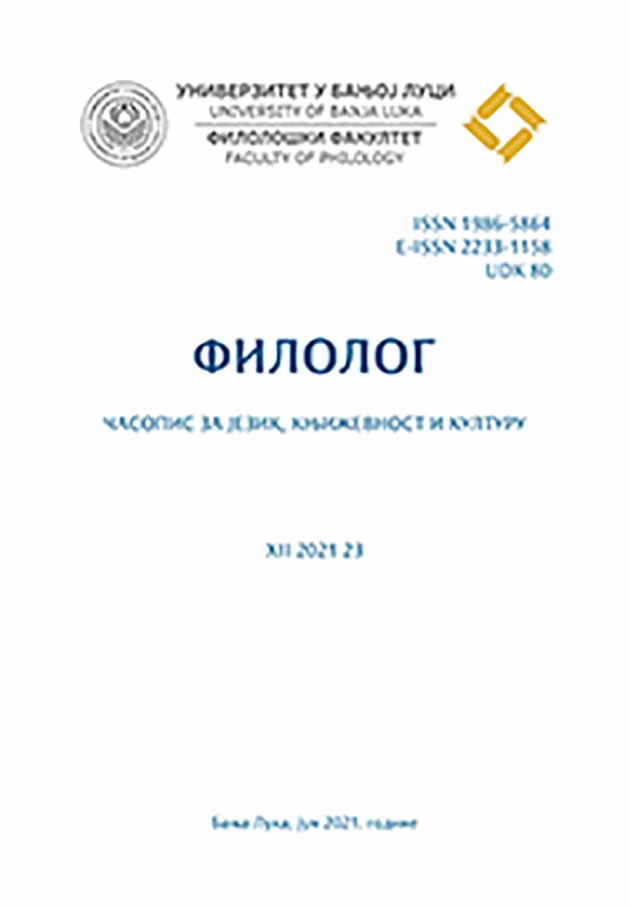Методологија организације лингводидактичког материјала у уџбенику руског језика Ни пуха ни пера!
Methods of Organising Linguodidactic Material in the Russian Language Textbook Ni puha ni pera!
Author(s): Jelena Ginić, Nataša D. AjdžanovićSubject(s): Foreign languages learning, Language acquisition, Descriptive linguistics, Eastern Slavic Languages
Published by: Филолошки факултет Универзитета у Бањој Луци
Keywords: textbook; Russian Language; textbook macrostructure; textbook lesson structure; language skills; texts; exercise system; methods of organising linguodidactic material;
Summary/Abstract: In this paper, the authors presented a new Russian Language textbook Nipuha ni pera! for initial learning (level A1). The macrostructure of the textbook,the structure of the textbook lesson, is presented in order to point out several possible ways of organising the linguodidactic material. In the sectionon standards for A1 level textbook development , the authors concluded that the written text is the basis for three of the four language skills: reading,speaking and writing; oral text in the form of dialogue and monologue is the basis for the linguistic competence of listening. Therefore, the authors concluded that a textbook written in the spirit of the communicative method must have a sufficient number of texts, followed by a sufficient number and quality of exercises. The authors pointed out that care should be taken that in a textbook written in the spirit of the communicative method,exercises can prevail in relation to texts, concluding that the relationship between texts and exercises in the textbook must be balanced. The text is the basic unit of the textbook, while without exercises there is no adoption of communicative functions or grammatical structures. Ni puha ni pera!,as the authors conclude, has an excellent balance of text and exercises. In10 lessons of the textbook, all types of texts are sufficiently represented,whether it is a text for written expression, or for reading comprehension or speech. Approximately 35 dialogic written texts were composed, approximately20 monologue written texts; about 20 dialogic oral texts, about 20monologue oral texts. Communicative functions and language structures are practiced through various written and oral exercises: there are about265 exercises in all 10 lessons that practice and activate language habits. The introductory phonetic course precedes the lessons. The test for checking the achievement after the course is standard in terms of scope and quality148 ФИЛОЛОГ XII 2021 23of A1 level tests at St. Petersburg University. The chapter on textbook lesson structure presents a uniform, modular lesson structure. Each lessonhas 6 parts: in the first part of the lesson, three dialogues with 10‒12 oral exercises are presented. The second part follows, in which the vocabulary and communicative functions that are the topic of dialogue with accompanying oral exercises are usually presented in a table; in the third part,linguistic and cultural elements with exercises are presented. In the fourth part, grammar and phonetics are presented, with exercises for adoption.The fifth part presents a recapitulation of vocabulary and communicative functions through a series of written exercises. The test that follows is the sixth part of the lesson: the acquisition of vocabulary and grammar of the given lesson is checked, as well as all four skills: listening, reading, speaking and writing. In the section in which the authors write about the methods of organizing linguodidactic material, the authors highlight that it is not necessary to follow the given order: the author's idea was that the student first intuitively adopts communicative functions and language structures,and only later systematically considers them. The authors suggest that each lesson begins with phonetics that is presented in fourth part of the lesson,and with the phonetic exercises from the introductory phonetics course,and that the next part can be either processing dialogues with exercises,or processing grammatical material, which would eliminate difficulties in working with dialogues. The authors believe that one should always start with phonetics and end with a test, and that everything else can go in the order that the teacher considers more appropriate for a specific group in specific circumstances. The possibility of different organisation of linguodidactic material in different lessons additionally gives dynamics to the methods of organising.
Journal: Филолог – часопис за језик, књижевност и културу
- Issue Year: 2021
- Issue No: 23
- Page Range: 132-149
- Page Count: 18
- Language: Serbian

